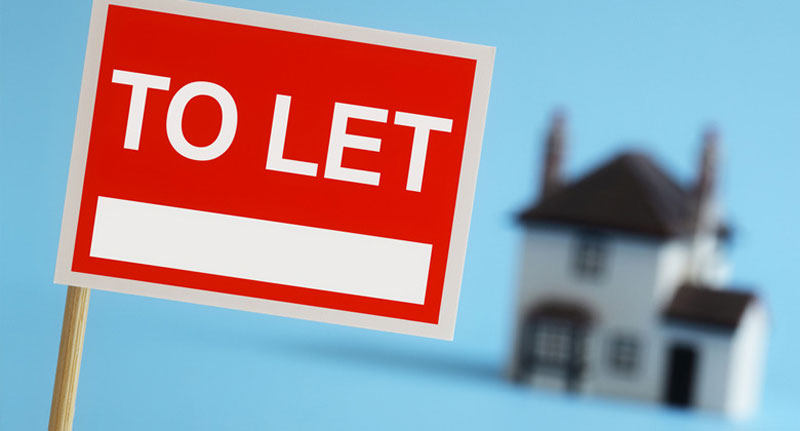You may be wondering if it is still worthwhile investing in bricks and mortar. If you do your homework and think long-term, buy-to-let properties can be a very attractive investment, despite the 3% stamp duty surcharge and gradual reduction of mortgage interest tax relief.
Of course, you can’t bank on property prices rising all the time, as there are periods when they will fluctuate. But despite this, over the long-term, property investors have been onto a winner. Values are around 22% higher than 10 years ago, according to Zoopla data, and a whopping 240% higher than 20 years ago.
There is much to think about before taking the plunge and we will endeavour to outline some important factors to consider when buying and managing an investment property.

Does it stack up financially?
As a buy-to-let investor, you will need to consider potential capital growth (increase in the value of the property over the medium to long term) and the rental yield (income generated from the property expressed as a percentage of the property value).
A local lettings agent can advise you on the typical rental value for the type of property you want to invest in which will enable you to work out the likely annual returns on the investment. You can calculate gross rental yield by dividing a year’s total rent by the purchase price of the property and multiplying by 100.
For example, if you bought a buy-to-let property for £350,000 and receive £1,500 a month in rent, to give an annual rental income of £18,000 (12 x £1,500), the gross rental yield is:
(18,000 / 350,000) x 100 = or 5.14%.
A good rental yield is generally benchmarked at around 5% a year. However, some properties might reap yields as high as 7%-plus.
To work out the net yield, you will need to factor in the running costs that have to be deducted, such as service charges and mortgage repayments (if applicable). There are currently some excellent rates for buy-to-let mortgages but aware that the deposit on a buy-to-let mortgage is usually required to be a minimum of 25%.
When you consider the potential for capital growth over time, an investment may still be worthwhile even if the annual yield comes in at the lower end of the scale.
How to choose a property
As always, a smart property purchase needs to be about location, location, location. The Thames Valley has long been a great place to invest, due to its proximity to London and large number of other businesses located along the M4 corridor, but to really maximise the popularity of your home for rent, look for a property near a train station or other transport links.
A two bed (or more) property will provide broader appeal than a one bed as you might then have interest from professional sharers and families rather than limiting yourself to renting to singles or couples.
When considering flats in the area, look for hidden costs such as service charges that might eat into your profits. Buildings with lifts and serviced communal areas frequently attract service charges of over £100/month.
Check out the length of the lease (if this applies) as a lease of less than 70 years could cause issues with obtaining a mortgage and could cost several thousand pounds to extend. Different mortgage providers have different thresholds, but you ideally want a minimum term of 80 years remaining.

Setting up your buy-to-let property
Once you’ve secured your investment property, you won’t want to waste any time getting tenants in situ. Appointing a good lettings agent can be the quickest route to finding suitable tenants and ensuring that you comply with the regulations associated with setting up and managing a buy-to-let.
As a landlord, you will need to reference new tenants to check they will be able to meet monthly rent payments. An agent will be able to help you with these checks, which include credit eligibility, affordability, employer checks and any references from previous landlords. You are also legally obliged to confirm prospective tenants have the right to lawfully live in the UK through Right to Rent checks under the Immigration Acts 2014 and 2016.
Energy Performance Certificate (EPC)
You will need to provide your tenants with an EPC and it must be at least an EPC band E. If you arrange a tenancy without ensuring your property is up to these standards, you could be fined up to £4,000.
Safety checks
It’s your responsibility to ensure the property is safe for your tenants, and as a part of this, you are legally required to get all gas appliances checked by a Gas Safe registered engineer every year. You must then provide tenants with a Gas Safety Certificate within 28 days of the annual check taking place.
You also need to ensure there are working smoke alarms fitted on every storey of the property from the start of the agreement, and carbon monoxide detectors must be in any room where solid fuel is used – both alarms must be tested on the first day of the tenancy.
Tenancy agreement
Even if it does add to the initial costs, don’t be tempted to skimp on the setting up of a proper contract. An Assured Shorthold Tenancy (AST) agreement is the most common type of contract and will ensure that your tenants commit to their legal obligations or face eviction.
Bear in mind that your tenant’s deposit must be stored in a Tenancy Deposit Scheme account, which means it is protected. Such a scheme is helpful with adjudicating, should there be any disagreements with a tenant about how much of their deposit they should receive back.
Preparing your property
In most circumstances, it is better let your property unfurnished, unless you are planning on letting to students. Young professionals or families are most likely to want to bring their own furniture with them.
You should consider if the kitchen or bathroom needs to be updated, whether the floor coverings or blinds or curtains need replacing, and if the overall décor needs an overhaul. A fresh coat of paint won’t cost the earth and will make the property much more attractive to prospective tenants.
If you choose wisely and manage your property well, a buy-to-let can provide a great long-term investment. Given the potential for capital growth and considering that rents tend to rise over the long term, an investment property can give you a great little nest egg.
If you are considering a buy-to-let, Michael Hardy can give you advice on a suitable investment property or provide a free market appraisal. Please call Wokingham 0118 977 6776 or Crowthorne 01344 779 999 for more information or read more about our full range of lettings services.


